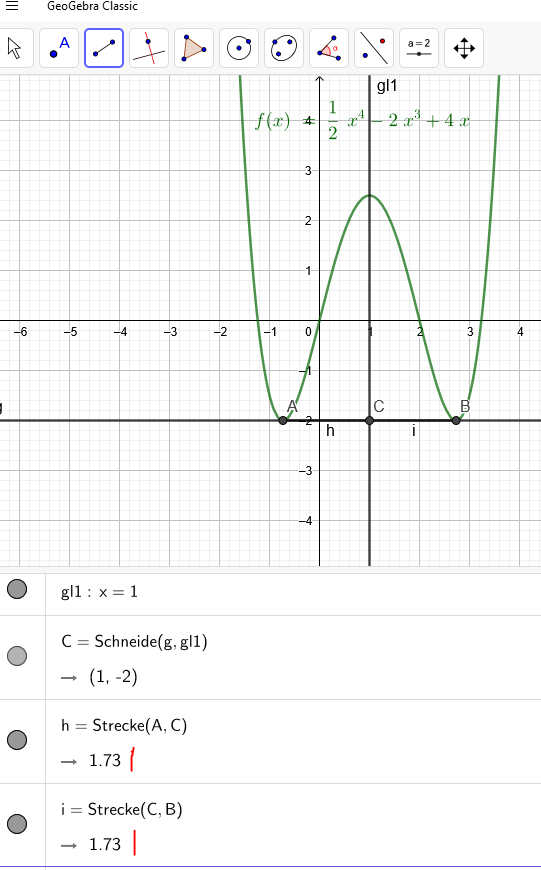Symmetrie zu x=1
f(x) = 1/2x^4-2x^3+4x
f´(x)=2x^3-6x^2+4
x^3-3x^2+2=0
Bei x=1 gibt es eine Nullstelle, somit ist bei x=1 ein Extremwert
Art des Extremum:
f´´(x) = 6 x^2-12 x
f´´(1) = 6 -12 = - 6 < 0→Maximum
Polynomdivision:
(x^3-3x^2+2):(x-1)=x^2-2x-2
x^2-2x-2=0
x_1= 1 - \( \sqrt[2]{3} \)→y_1=2
x_2= 1 +\( \sqrt[2]{3} \)→y_2=2
f´´(x_1) → Minimum
f´´(x_2) → Minimum
Da nun die beiden Minima symmetrisch zueinander liegen und bei x=1 ein Maximum liegt, ist f(x) symmetrisch zu x=1.
Text erkannt:
GeoGebra Classic
\( \mathrm{g} \mid 1: \times=1 \)
\( \mathrm{C}= \) Schneide \( (\mathrm{g}, \mathrm{g} \mid 1) \)
\( \rightarrow(1,-2) \)
\( h=\operatorname{Strecke}(A, C) \)
\( \rightarrow 1.73 \)
\( \mathrm{i}=\operatorname{Strecke}(\mathrm{C}, \mathrm{B}) \)
\( \rightarrow \)
mfG
Moliets